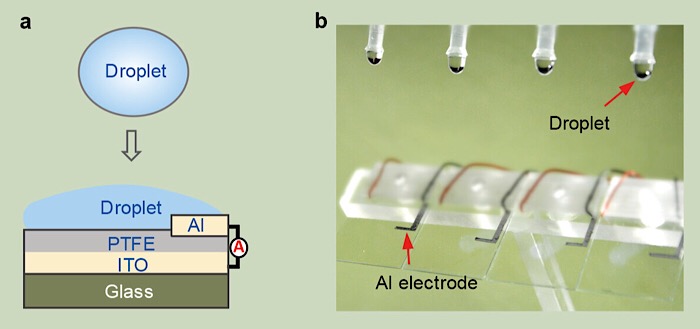New droplet-based electricity generator: A drop of water generates 140V power, lighting up 100 LED bulbs
A research team led by scientists from the City University of Hong Kong (CityU) has recently developed a droplet-based electricity generator (DEG) with a field-effect transistor (FET)-like structure that allows for high energy conversion efficiency and instantaneous power density thousands of times that of its counterparts without FET technology. This would help to advance scientific research of water energy generation and tackle the energy crisis.
The research was led together by Professor Wang Zuankai from CityU’s Department of Mechanical Engineering, Professor Zeng Xiao Cheng from University of Nebraska-Lincoln, and Professor Wang Zhong Lin, founding director and chief scientist from Beijing Institute of Nanoenergy and Nanosystems of Chinese Academy of Sciences. Their findings were published in Nature in a study titled “A droplet-based electricity generator with high instantaneous power density.”













